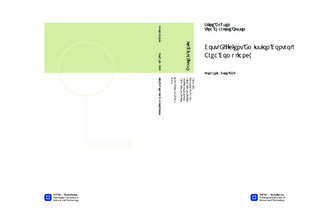| dc.description.abstract | The overall aim of this case study is to find the most cost-effective strategy for complying with the IMO s MARPOL Convention Regulation 13 & 14 in the Baltic Sea Emission Control Areas (ECAs) in the period from 2015 to 2035. The alternative compliance strategies considered are:- Scenario 0: Use Marine Gas Oil (MGO with 0.1% sulphur) to comply with the sulphur requirements, no other abatement measures installed, but an assumed NOx-taxation applies;- Scenario 1: Use Heavy Fuel Oil (HFO with 2.7% sulphur) and add scrubber and SCR to reduce SOx and NOx emissions, respectively;- Scenario 2: Use Marine Gas Oil (MGO with 0.1% sulphur) together with an SCR; and- Scenario 3: Use Liquefied Natural Gas (LNG), single fuel or dual fuel.The following route is established: Helsinki Zeebrugge Antwerp St. Petersburg Kotka Helsinki. The total distance for the roundtrip is 3654nm. 48 roundtrips are completed every year.Based on the specific fuel consumption for the engine and the sulphur content in the fuel, the sulphur emission factor for each scenario is calculated. The amount of SOx emitted from the ship is found by summarizing the product of the engine load, the engine size, the ship s estimated time at sea and the emission factor. The NOx emission limits for the ship engines in relation to their rated engine speed given in revolutions per minute. The NOx emission factor is assumed to be constant at 55 kg NOx per ton fuel. Investment analyses are performed for a ship type both as new builds and as retrofitted. Operational costs include: fuel costs, lubricating oil costs, maintenance and repair/replacement costs, environmental taxation and educational costs (where applicable), among others. Scenario 0 is chosen as reference point based on the fact that it has the lowest investment cost among the scenarios. The cost-effectiveness ratio (CER) relative Scenario 0 is found from the following formula:CER[EUR/tons]=(Differences in PVC between Scenario 0 and Scenario X)/(Differences in emissions between Scenario 0 and Scenario X)=∆PVC/∆EThe following conclusions are drawn from the cost-effectiveness analysis: - The scrubber in combination with SCR is a favored compliance strategy for IMO s requirements, both for new builds and retrofits. It has the lowest fuel costs (HFO prices are low and stable) and the lowest present value of total costs among the scenarios outlined.- Having an engine running on MGO is not considered cost-effective. MGO prices are high, and are expected to increase even more. NOx abatement technologies are needed in addition.- LNG is a cost-effective solution, and it is the most environmental friendly alternative. Retrofitting vessels to run on LNG, however, is expensive. The LNG dual fuel technology is a flexible solution, and makes it more economic for the ship to trade outside the ECAs.- The cost comparison between the different scenarios depends largely on the future development of fuel prices.- Modal shift to either rail or road could be a consequence. | nb_NO |

